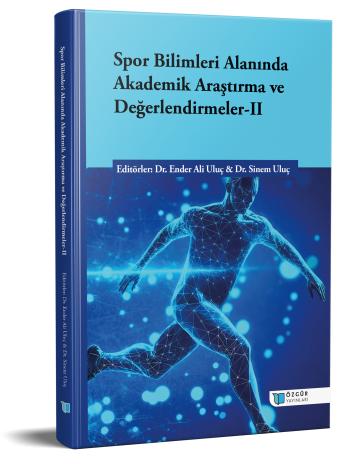
Alt Maksimum ve Maksimum Egzersiz Testlerinde Oksijen ve Laktat Kinetiği
Şu kitabın bölümü:
Uluç,
E.
A.
&
Uluç,
S.
(eds.)
2024.
Spor Bilimleri Alanında Akademik Araştırma ve Değerlendirmeler II.
Özet
Egzersiz yoğunluğuna bağlı olarak oksijen alımı (VO2) kinetiğinin özellikleri farklılık gösterir. Egzersiz, belirli bir iş yükünde gerçekleştirildiğinde ve bu iş yükü laktat eşiği (LE) nin altında ise, VO2 eksponansiyel olarak bir istikrarlı düzeye artar. Bu alan içinde VO2 artışının iş yüküne göre eğimi veya VO2 yanıtlarının zaman sabiti iş yükü ile ilişkili bulunmamıştır, bu da VO2 ve iş yükü arasında lineer dinamik bir ilişki olduğunu göstermektedir. Ancak, fiziksel antrenman, yaş ve patolojik durumlar gibi bazı faktörler, egzersizin başlangıcında VO2 kinetik yanıtlarını değiştirebilir. Egzersiz VO2 kinetiği için kontrol mekanizması ile ilgili olarak, iki zıt hipotez öne sürülmüştür. Bunlardan biri, egzersizin başlangıcında VO2 artış hızının aktif kaslara oksijen taşıma kapasitesi tarafından sınırlı olduğunu öne sürmektedir. Diğeri ise, egzersiz sırasında oksijen kullanımının yeteneğinin artış hızını belirleyen kısıtlayıcı adım olarak hareket ettiğini öne sürmektedir. Bu konu hala tartışılmaktadır. Egzersiz, LE'nin üzerinde bir iş yükünde gerçekleştirildiğinde, VO2 kinetiği daha karmaşık hale gelir. Birkaç dakika egzersizden sonra ek bir bileşen geliştirilir. Yavaş bileşen, istikrarlı durum VO2'ye ulaşma süresini geciktirebilir veya egzersiz yoğunluğuna bağlı olarak VO2'yi maksimum seviyeye yönlendirebilir. Bu yavaş bileşenin büyüklüğü ayrıca egzersizin süresine bağlıdır. Ağır egzersiz sırasında VO2'nin yavaş bileşeninin olası nedenleri şunları içerir: (i) kan laktat seviyelerinin artışı; (ii) plazma epinefrin (adrenalin) seviyelerinin artışı; (iii) artmış ventilasyon işi; (iv) vücut sıcaklığının yükselmesi; ve (v) tip IIb liflerin devreye alınması. VO2'nin yavaş bileşeninin %86'sının egzersiz yapan ekstremitelere atfedilmesi nedeniyle, büyük katkı sağlayanın muhtemelen egzersiz yapan kasın kendisi olduğu düşünülmektedir. Yüksek yoğunluklu egzersiz sırasında düşük verimlilikteki tip IIb liflerinin (yavaş bileşende yer alan lifler) artan bir şekilde devreye alınması, egzersizin oksijen maliyetinde artışa neden olabilir. Motor birim devreye alımının desenindeki değişiklikler ve dolayısıyla tip IIb liflerinin daha az aktivasyonu, fiziksel antrenman sonrası VO2'nin yavaş bileşeninde gözlenen azalmada büyük bir kısmı hesaba katabilir.

